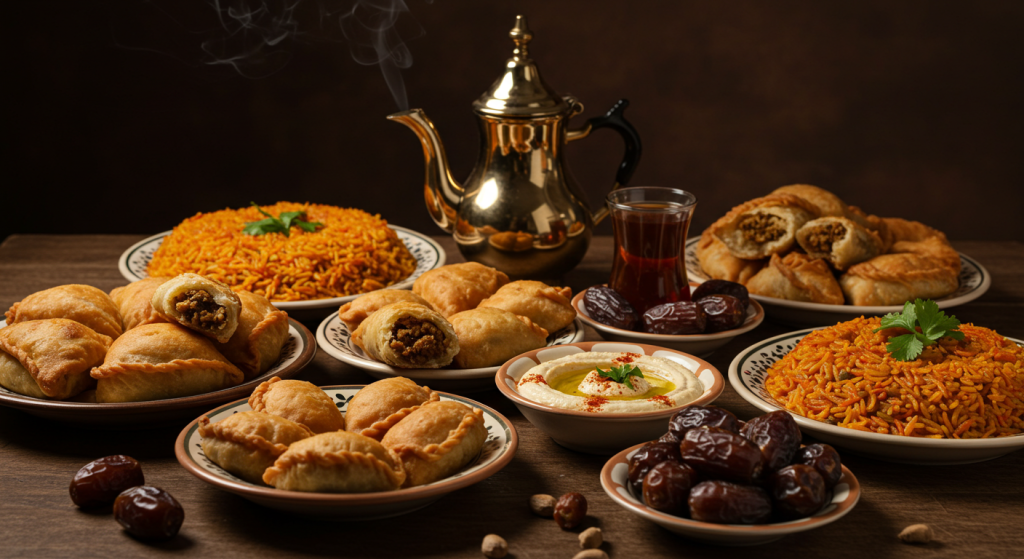
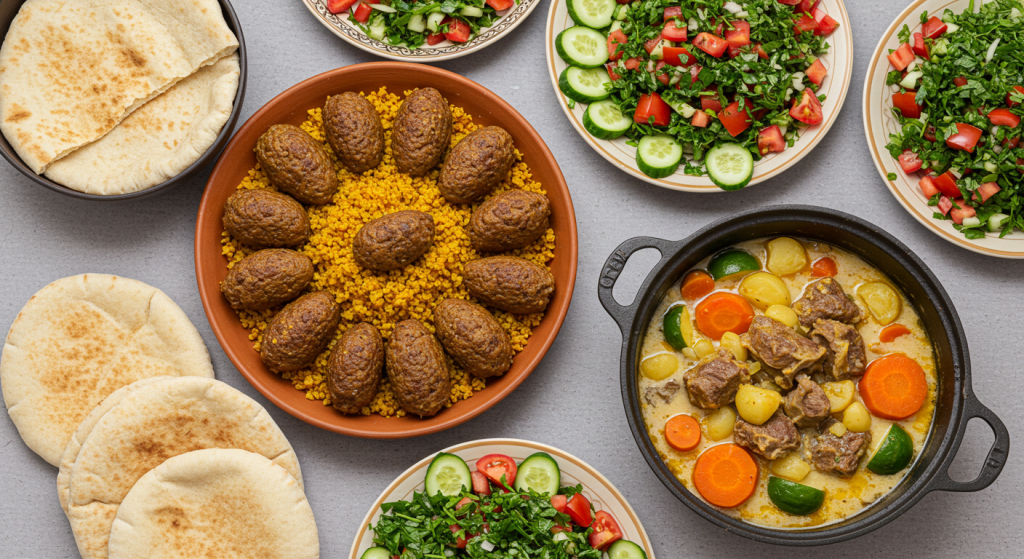
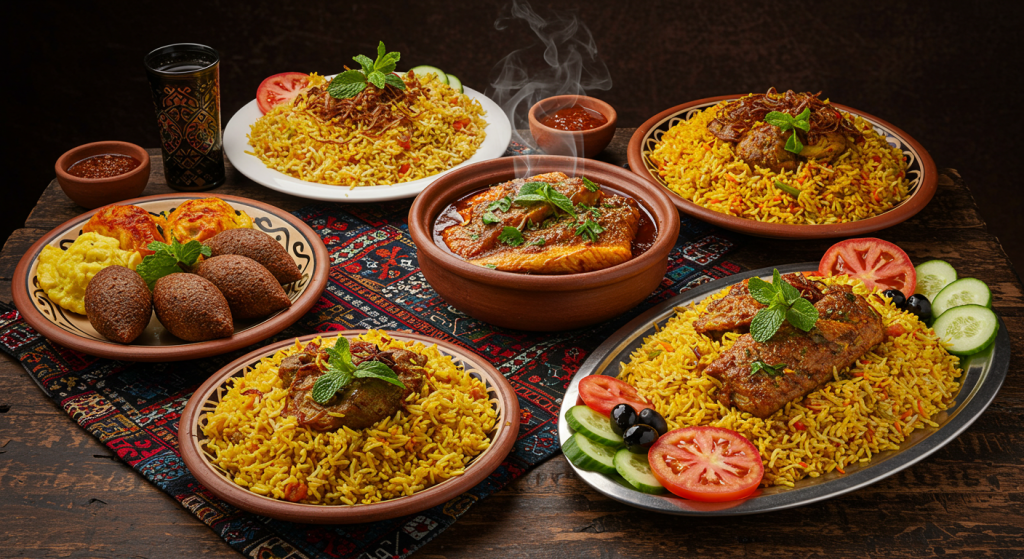
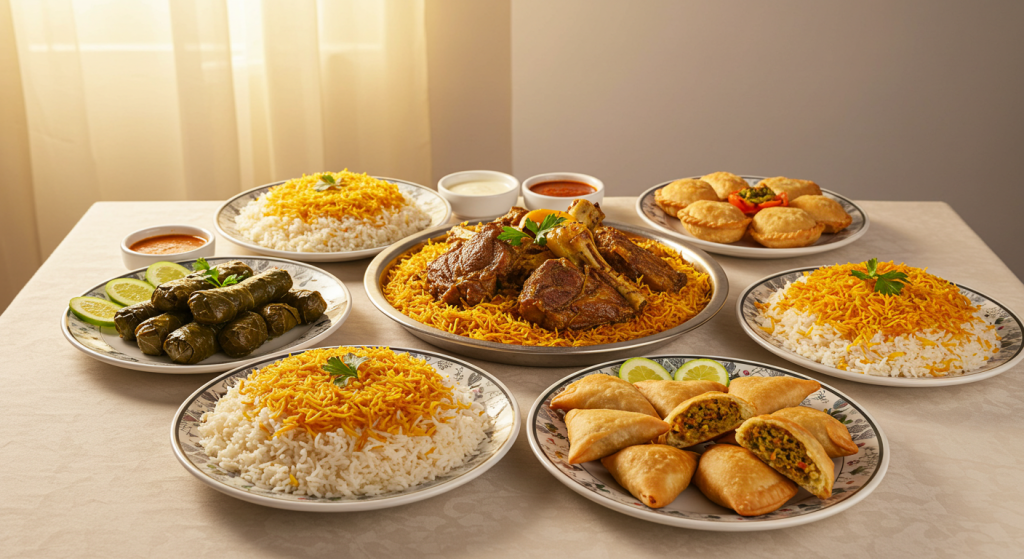
Iraqi cuisine is a vibrant tapestry woven from centuries of cultural interplay, local ingredients, and traditional recipes. It reflects the ancient history and diverse populations that inhabit this nation, which has been a crossroads of civilization for thousands of years. Understanding Iraq’s food goes beyond mere sustenance; it’s a journey through its history and a celebration of its cultural identity.
The Iraqi table is a feast for the senses, adorned with an array of dishes that boast rich flavors and aromatic spices. One of the quintessential elements of Iraqi food is rice, commonly enjoyed in various forms, especially in the popular dish known as “biriyani.” This dish is made with fragrant basmati rice, a mixture of spices, and can be combined with chicken, lamb, or even vegetables, showcasing the depth of flavors characteristic of Iraqi cooking.
Another staple is “kebabs,” typically grilled meat skewers that are marinated in a blend of spices and herbs. The influences of Persian, Turkish, and Arab cuisines can be found in these kebabs, which are often served with fresh salads and breads, such as “khubz” or “samoon.” Bread in Iraq is not just an accompaniment but plays a critical role in the dining experience, with families often tearing pieces off to scoop flavorful stews and dips.
Speaking of dips, Iraq has a selection of tantalizing appetizers, one of the most beloved being “mutabbaq,” a savory pastry filled with minced meat and spices. Another noteworthy mention is “baba ghanoush,” a smoky, creamy eggplant dip that pairs perfectly with fresh bread. These appetizers reflect the communal aspect of Iraqi dining, inviting families and friends to gather around the table and share in the delights.
Vegetables play a significant role in Iraq’s culinary palette, with dishes like “masgouf,” grilled fish often seasoned with salt and served alongside seasonal vegetables. The use of fresh ingredients is emblematic of the Iraqi approach to cooking, emphasizing the importance of quality over complexity. Traditional gardens produce an array of vegetables and herbs, including tomatoes, cilantro, and mint, which infuse Iraqi dishes with freshness.
One cannot discuss Iraqi food without mentioning “dolma,” a beloved dish made by stuffing grape leaves or vegetables like zucchini and eggplant with a mixture of rice, meat, and spices. This dish exemplifies the sophistication of Iraqi cuisine, as it requires skill and patience to prepare, and is often a highlight during festive occasions and family gatherings.
Food is deeply embedded in Iraqi culture, symbolizing hospitality and generosity. Sharing meals with loved ones is a cherished tradition; bread and salt are offered to guests as a sign of respect and friendship. This connection between food and relationships extends to communal feasts during holidays such as Eid, where families come together to prepare sumptuous spreads.
In conclusion, the culinary scene of Iraq is a rich reflection of its history and culture. From aromatic rice dishes to delicate pastries, each plate tells a story of tradition, community, and resilience. To savor Iraqi food is to engage in an experience that beautifully encapsulates the essence of a nation that thrives on flavors and togetherness. Exploring Iraq’s culinary landscape is not just about tasting food; it is about discovering the heart and soul of a people whose culinary heritage is as enduring as their history.
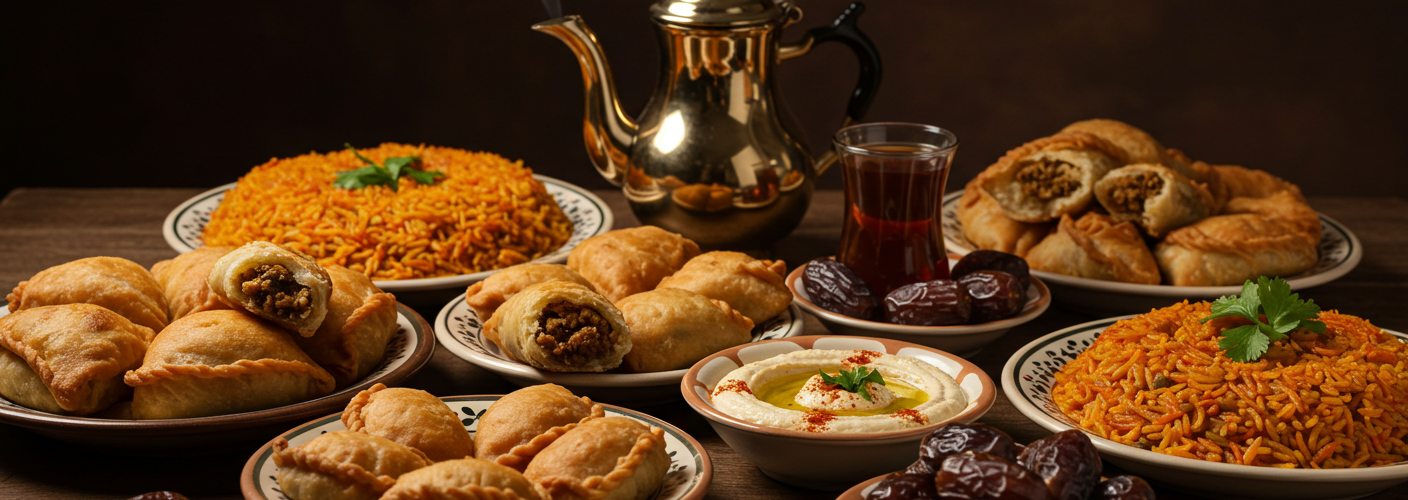



Add comment